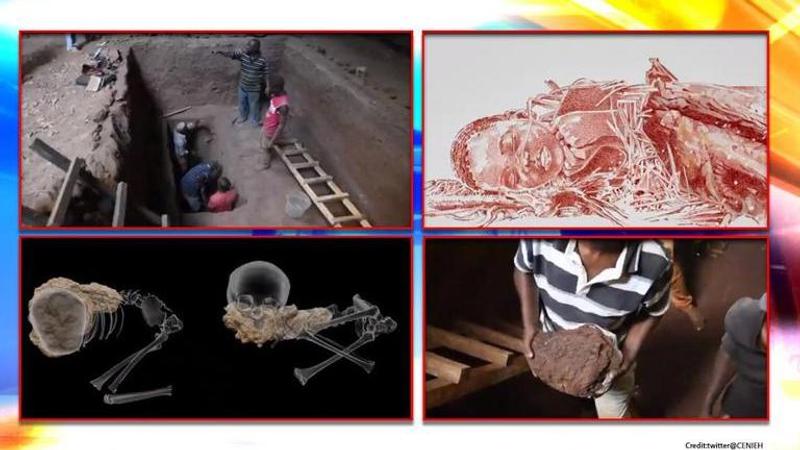Published 13:06 IST, May 6th 2021
Africa's oldest human grave found, toddler buried with pillow 78,000 years ago
A skeleton of a roughly 2.5 to 3.0-year-old toddler in a flexed position on a pillow dating to 78 thousand years ago was excavated at Panga ya Saidi in Africa.

Archaeologists have unearthed the earliest known human burial in Africa in southeast Kenya’s MSA layers of Panga ya Saidi (PYS), a cave site on the tropical upland coast. A skeleton of a roughly 2.5 to 3-year-old toddler in a flexed position on a pillow dating to 78 thousand years ago was excavated. While scientists argue that the human burials in the Middle East and Europe are some of the oldest, the African grave of the child is one of the earliest known across the continent, according to new research published Wednesday in the journal Nature. The cave sediment and the bones helped scientists unveil the details of the evolution of the funerary practices in Homo sapiens.
The micromorphological analysis of the burial pit content found that the grave belonged to a period known as the Middle Stone Age and that the pit was deliberately excavated. The presence of little or no displacement of the unstable joints during decomposition points of the body confirmed the finding to be the oldest known human burial in Africa. Although, scientists found the preservation of some “primitive features” which supports increasing evidence for the modern-day traits of the burial practices. “The recently discovered burial sheds light on how Middle Stone Age (MSA) populations interacted with the dead,” the study purported. Researchers named the ancient toddler ‘Mtoto’, a Swahili word that means “child.” He was buried in the sheltered part of the cave as per the traditions of symbolically significant burials at the time.
"What counts as symbolism, and whether is it archaeologically visible is quite complicated," explains Dr Louise Humphrey from natural History Museum in a statement. "This burial might be symbolic, and it certainly goes beyond the purely perfunctory. They have obviously taken care to arrange the body in the grave, including putting it in a headrest. I think there is a personal manifestation of loss."
[Burial was found at Panga ya Saidi cave. Credit: CENIEH]
[Discovery of this burial will hopefully spur other researchers on to start looking for more. Credit:CENIEH]
Pit transported to National Museums of Kenya
The excavation was led by archaeologist Michael Petraglia of the Max Planck Institute for the Science of Human History in Jena, Germany, Max Planck archaeologist Nicole Boivin who started the work at the site in 2010. As archaeologists kept digging the ancient pits, signs of Mtoto’s burial appeared in 2013 but the fragmentary bones visible were extremely fragile to move. Later, the sediments’ lab tests proved that the burial was exposed to sunlight about 78,300 years ago.
Excavators then transported the entire pit to the National Museums of Kenya in Nairobi in 2017 for further research and analysis. Paleoanthropologist María Martinón-Torres at the National Research Center on Human Evolution in Burgos, Spain, and her team led the research by CT imaging to create digital versions of the PYS bones. The child’s two teeth found in the pit indicated that it had died aged approximately 2.5 to 3 years. A study of the collarbone and two ribs indicated that it was wrapped in a shroud, and as per the dentures in the skull base and attached neck bones, its head was laid at rest on a pillow.
Updated 13:06 IST, May 6th 2021






